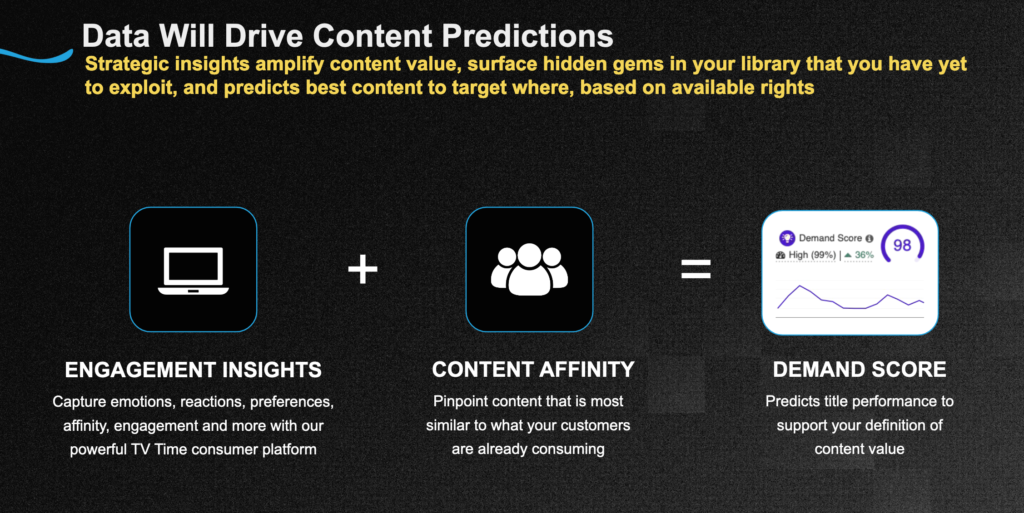M+E Europe
Whip Media at CWMF: Advanced Insights Can Help Transform Content Licensing
Story Highlights
New tools are making it possible to determine what content has the greatest chance to be successful and can significantly help the media and entertainment industry make the right decisions when it comes to determining what programming to produce or license, according to Paul Hastings, SVP of global sales at Whip Media.
Clearly, the content licensing “landscape is changing” and data is going to play a very important role in the “development of licensing strategies for both buyers and sellers moving forward into the future,” he said Feb. 25, during the Licensing & Distribution breakout session “Transforming the Global Content Licensing Ecosystem: Predict What Content to License Through Advanced Insights” at the Content Workflow Management Forum, “M&E’s Premiere Localisation Event.”
 Pointing to a list of Whip Media’s M&E customers, he said the company is “uniquely placed to be able to see how content licensing is evolving and the role in which data has to play in all of that.”
Pointing to a list of Whip Media’s M&E customers, he said the company is “uniquely placed to be able to see how content licensing is evolving and the role in which data has to play in all of that.”
As a result of the COVID-19 pandemic, over the last 12 months, there has been a “massive acceleration of changes which were already happening,” he told viewers, explaining: “People were already watching a lot of content. They were already starting to watch more online content. But the lockdown and the ability and the requirement for people to entertain themselves during that lockdown has meant that there has been an exponential growth” in the amount of content consumed and “the willingness for customers to sign up for services.”
In the U.K. alone, there were “over 10 million customers who signed up for new services as a result of the lockdown” there, he pointed out.
The Value of Catalogue Content
Meanwhile, there has also been a perceived change in the value of catalogue content as a result of the pandemic.
There had been talk before the pandemic of an “arms race” between Amazon, Netflix and other companies for the creation of new content in which huge amounts of money were spent to create that content, Hastings said.
Gradually, however, new content was delayed and postponed amid the pandemic, he noted.
Although new content remains “the driver” for a lot of signups for streaming services, library content has tremendous value too, he said, explaining viewers want new content and older content – they want variety.
Whip Media’s Data
Whip’s rich and unique audience data is able to tell what really matters to viewers, Hastings went on to say. The company’s TV Time app now has 16 million users and it is able to take a “qualitative” – vs. quantitative – measure of what they are watching and why, he said. The app captures over 40 million consumer insights every month and provides the “why behind the watch,” he noted.
The company’s customers can use the data “to make better and smarter data-driven licensing decisions” because they can get a sense of what people are watching now and why, and what they plan to watch in the future also, he said, noting Whip uses artificial intelligence and machine learning to create predictions of what people will watch next.
Providing an example of how accurate its data has been, he noted that the Disney/Marvel TV series WandaVision was heavily anticipated by viewers and many of them indeed went on to watch the show when it aired.
 The Future
The Future
“The future, we believe, of content licensing is the ability to be able to predict the success of content on different platforms by taking down all those engagement insights and that multidimensional pattern of peoples’ viewing behaviour – the affinity that they have” when it comes to one particular piece of content vs. another – and “mapping that across the entire user base of 16 million people,” Hastings said.
From that info, the company is able to create a “demand score,” a score that predicts the likely success of a particular piece of content on a platform at any one time, he noted.
The same piece of content, however, will have different scores depending on the platform, he pointed out. That is because content that may work well on an ad-based video on demand (AVOD) platform may not work so well on a transactional video on demand (TVOD) platform, he said. That demand score “becomes a currency” – an “empirical measure of the likelihood of success of that content,” he noted.
“That is where we believe the future of licensing for both buyers and sellers is heading,” he said, adding it’s been tested and the results speak for themselves when it comes to accuracy.
Click here to access video of the presentation. Click here to download the presentation slide deck.
The Content Workflow Management Forum was produced by MESA, the Audio Business Continuity Alliance, Content Localisation Council, Smart Content Council, and the Hollywood IT Society, with sponsorship by Iyuno Media Group, Richey May Technology Solutions, Whip Media Group, Deluxe, Digital Nirvana, Meta, Vubiquity, EIDR, Keywords Studios, Los Angeles Duplication & Broadcasting, Nexus TV, OOONA, Signiant and Titles-On.









